This week Brock needed to photograph a couple of the large figureheads on display in our lobby and it reminded me of their really interesting history. I’m not talking about the history of the ships they came from, although I am sure that’s fascinating as well, in this instance I’m talking about their acquisition by the Museum and the sad story associated with it.
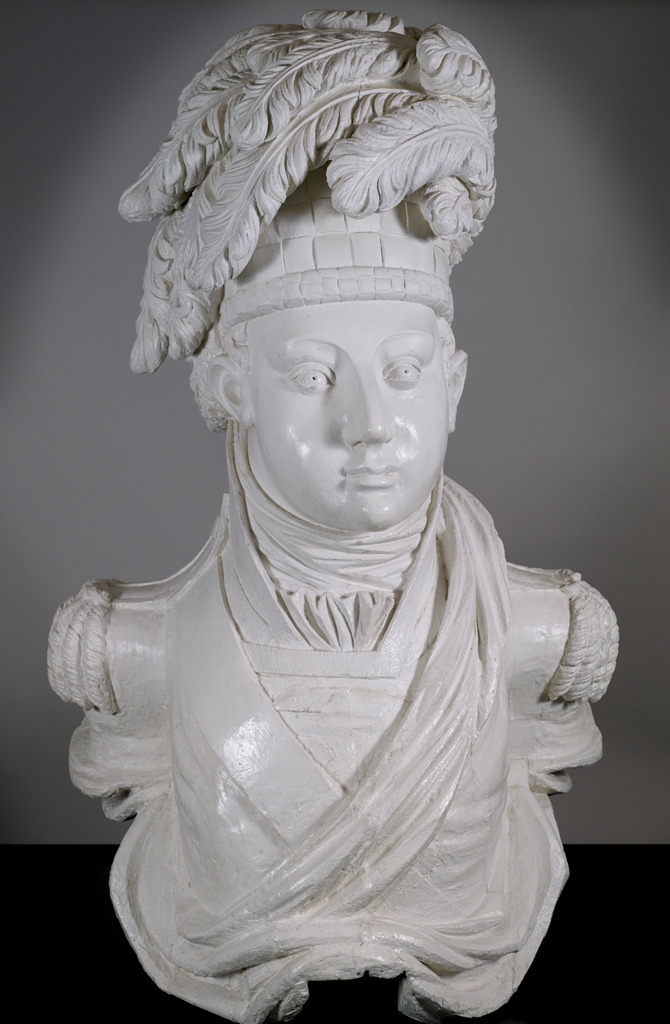
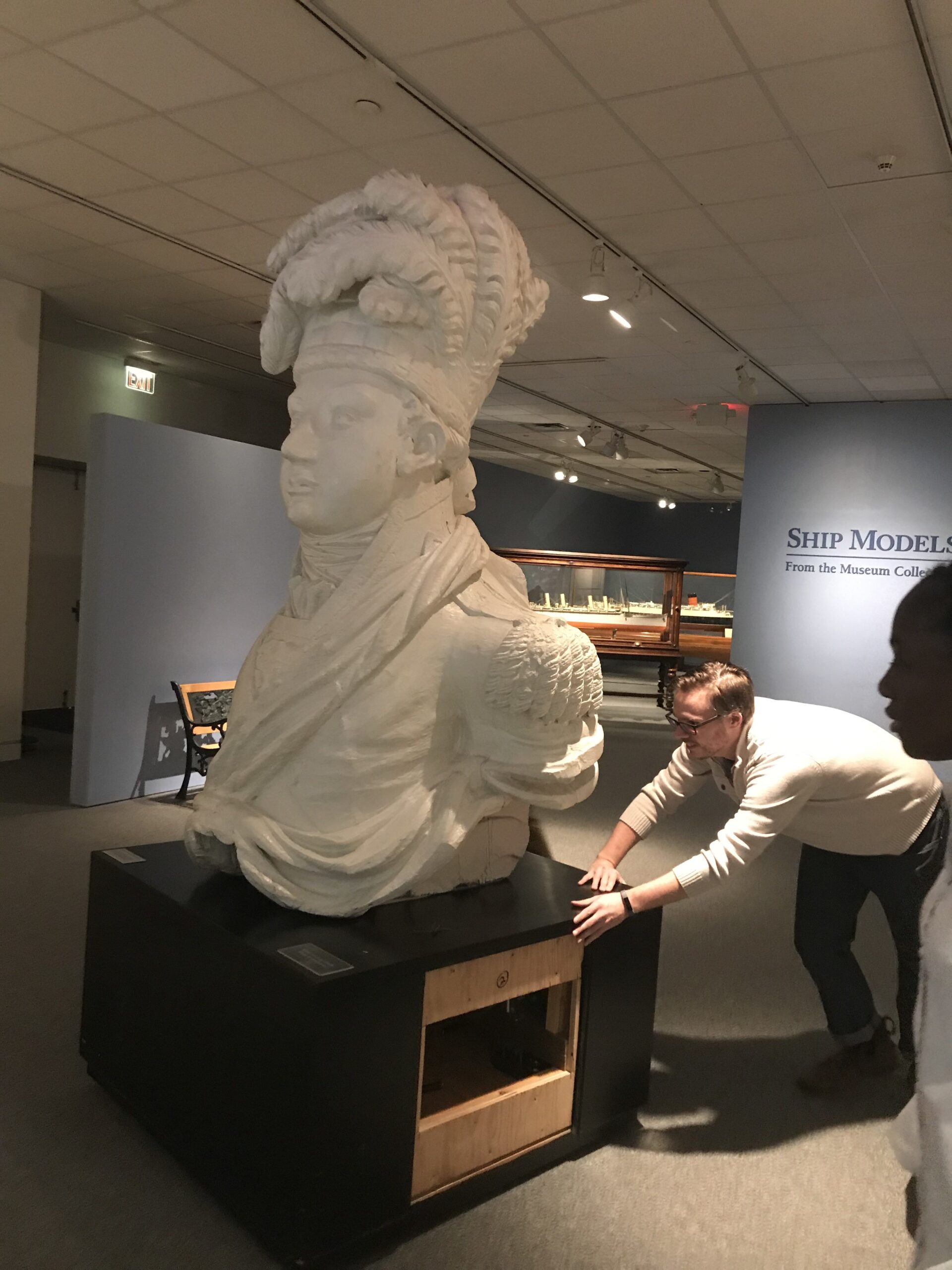
The two figureheads, from HMS Formidable and HMS Edinburgh, along with a large bow ornament from the HMS Alexandra, were acquired in England in 1939. The story begins when our agent in London, Admiral Bertram M. Chambers, made a visit to the famous Castles Shipbreaking Company Ltd. in January of 1936.

The Castles company existed at a time when the Royal Navy discovered that wooden warships had no place in the world of modern naval warfare. Between 1861 and 1910 the Admiralty disposed of 800 ships-of-the-line and Castles was one of the many yards buying the vessels for shipbreaking. Between the 1828 and 1935 Castles acquired and dismantled about 248 Royal Navy ships and about three times as many merchant vessels. From their shipbreaking activities Castles recycled wood for building and furniture construction. Trying to keep their business afloat in tough times, Castles also got into the business of building garden and bespoke furniture.
While they conducted business, Castles developed a large collection of ship ornamentation, everything from figureheads to bow ornaments to name boards and other decorative objects. Rather than sell the objects, they displayed them in and around their many office buildings. They even maintained a showroom that was essentially a museum of Royal Navy historical objects.
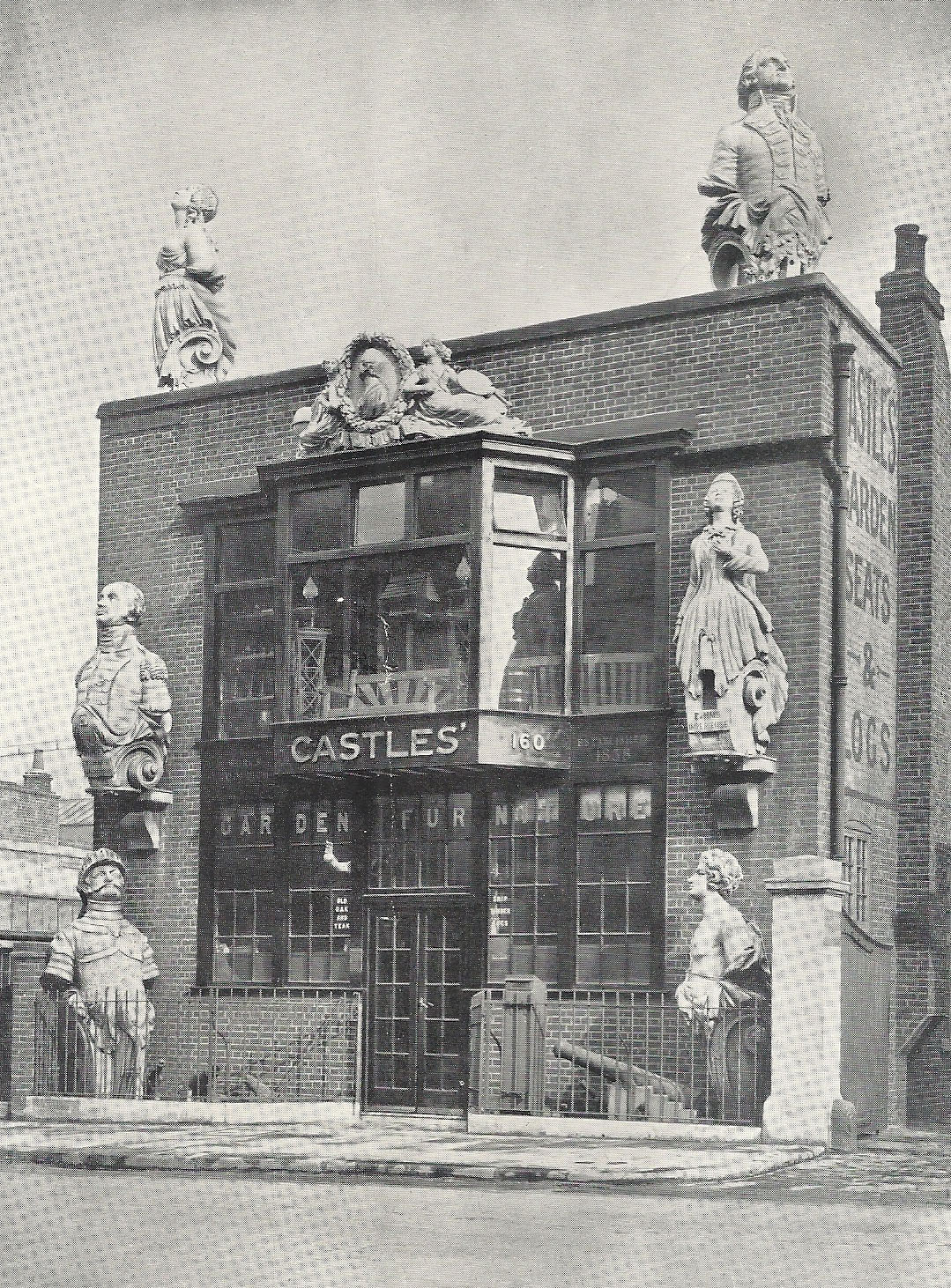
During Admiral Chambers visit in 1936 he apparently inquired about the purchase of figureheads and objects from the Castles collection. The managing director at the time, William Ball, indicated they didn’t normally sell objects as “they formed part of their general collection” (so it seems they considered themselves a museum or historical society of sorts) but they did offer a few pieces displayed at their Woolwich Works. Nothing appears to have come from this original correspondence other than a visit to the site by Museum buyer Fred Hill during one of his buying trips. Thereafter, its seems that Mr. Hill developed a “correspondence friendship” with Mr. Ball.
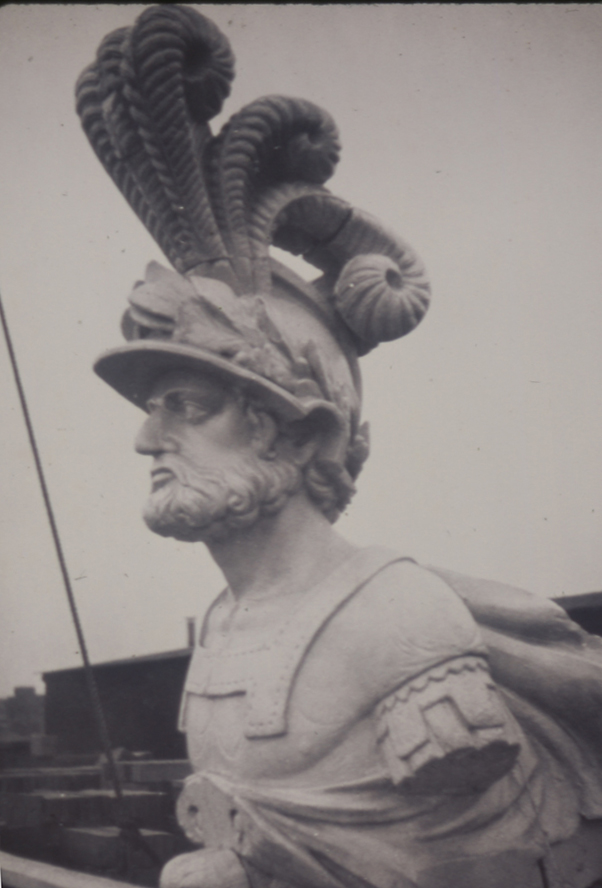

By 1938 Castles was in financial difficulties and a November letter from Mr. Ball to Mr. Hill states that Castles was “having to consolidate business” and was considering dispersing their collection. Mainly because the consolidation meant the collection “couldn’t be seen” but that they couldn’t afford to dispose of them “except in the best market.” In other words, they needed to get the best price possible for the items in the collection.
With the situation in Europe looking dire, Castles had become desperate to move its London collection and in February of 1939 Mr. Ball offered to sell the entire collection to the Museum. Mr. Ball specifically mentions six figureheads that decorate the front of the London office (which they will only sell as a group), one in the showroom, two at the Plymouth works, a plaque at the London office and a mantlepiece created from pieces of the famous Royal Navy ship HMS Temeraire. A note dated April 21, 1939 indicates that several of the staff wanted to move forward with the acquisition, but shipyard president and Museum director Homer Ferguson noted that money was tight and suggested buying just three of the pieces. When more money became available the Museum would try to acquire the rest.
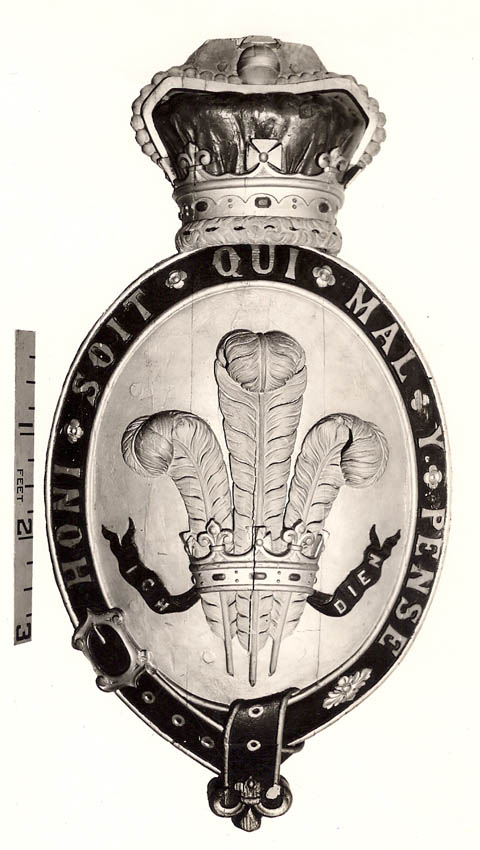
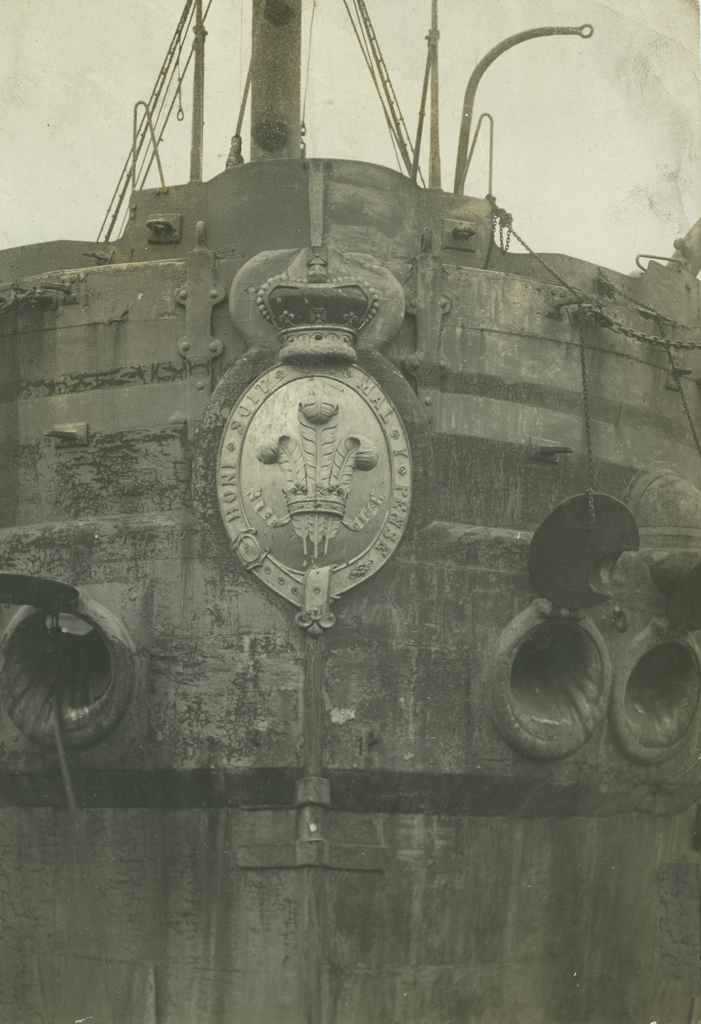
A letter dated May 5, 1939 from Mr. Ball accepts the sale of the three items and then asks a question that really shows the bleak mindset of people in England who were living with the threat of war as a constant presence in their lives. Mr. Ball writes “We are at this side of the water rather wondering just how our friends across the Atlantic are viewing the present international situation. We are always, of course, hoping that the clouds will eventually pass away, but everything is difficult and it does sometimes look as if the Democratic countries will eventually have to say that they have had enough of the abuse which has been so current during recent months and to face up to stopping it by force if absolutely necessary.” After reading this I thanked my lucky stars for living in the United States as its location alone it offers us some protection from some of the craziness that occurs in the world.
Throughout June of 1939, the staff at Castles performed restoration work on the three carvings and worked with Fred Hill on preparing them for shipment. The war situation was obviously getting more worrisome as Mr. Ball states in a letter “now you are to have these old relics of ours, the sooner they are shipped the better.” The figureheads and plaque finally depart London on the SS Quaker City on July 26, 1939 and arrived in Virginia sometime in August.

In a letter dated October 5, 1939 Mr. Ball writes from Plymouth, England. The letter was predominantly to send as a request for the final payment for the work completed but sadly relates why the request was delayed:
“I hope you will forgive us for not having sent the enclosed account before, but I know you will understand that the happenings of the last few weeks have turned everything upside down. We were forced to evacuate our London offices in a hurry, and everything is now concentrated here at Plymouth. This raises the question of the figureheads. At the moment we have not moved them but this may be necessary at any time.”
Mr. Ball asks one more time if the Museum would consider the matter of acquiring the London collection. Sadly, things aren’t any better financially at the Museum and Mr. Hill responds “I do not think decision for the acquirement can be made at the present time.” By December 29th, Castles has decided that they have no choice but to dispose of the collection by splitting it up because it had become “unsafe to leave them at the unattended offices.”
Sadly, the site where many of the pieces were stored and displayed was destroyed by the Germans during the bombings of April 16-17, 1941. Just nine-years-old at the time, historian Eric Walker remembered seeing about thirty figureheads at the Castles site at Baltic Wharf and personally witnessed its destruction. Around 11 p.m. a single bomb demolished the Castles office and “up to a dozen figureheads instantly disappeared.” Just four hours later “three more bombs finished off the rest of the offices and yard.” Just a few fragments of the figureheads were found—some floating in the Thames. Its really sad to think of how much history was lost, not just at Castles but all over Europe, for such a crappy reason.
If you are interested in learning more about the history of Castles Shipbreaking and their figurehead collection there is a great internet site and ebook about the company available at: https://castlesshipbreaking.co.uk/
There also a good article on Castles and the lost collection by Richard Hunter attached to our online records for the carvings: https://catalogs.marinersmuseum.org/object/CL3925
Be sure to visit the Museum (after all, it only costs $1!) to see and love on the two Castles figureheads which are displayed near the lobby. If they are something you get to see on a daily basis, I hope you’ll think of them differently now that you know the unique history that surrounds them.